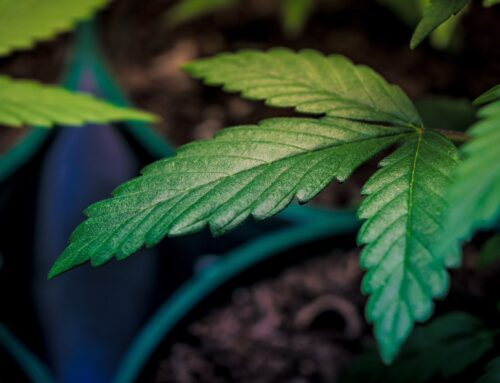West Virginia collected $34 million in cannabis taxes. It hasn’t spent a penny.
October 22, 2025
Since the state’s first dispensary opened in 2021, West Virginia’s medical cannabis program has collected roughly $34 million in taxes, licensing fees and interest.
State law requires the money be used to create a medical cannabis research program, provide resources to residents with substance use disorder and fund law enforcement training.
But almost four years later, the money sits unspent.
Cannabis is still an illegal drug at the federal level. Traditional banks were unwilling to hold the state’s cannabis dollars, so they’re held at a credit union under control of the state Treasurer’s Office.
“The money in the fund will remain unallocated until federal law changes,” said Treasurer’s Office spokesperson Carrie Hodousek.
But other states with legal cannabis markets, including Maryland, Pennsylvania and Ohio, are spending their tax revenue.
In 1970, the federal government classified marijuana as a Schedule I drug, a designation that finds it has no medical use and a high potential for misuse. Today, 40 states have legalized recreational or medical cannabis use despite the federal classification.
West Virginia’s 2017 Medical Cannabis Act allowed licensed physicians to issue medical cannabis cards to patients seeking alternative treatment for serious health conditions.
But it took over four years from the time the bill was passed for patients to get medical cannabis from a dispensary in West Virginia.
In 2018, then-Treasurer John Perdue said banks refused to hold funds from the program because they did not want to be held liable for interacting with money from an illegal substance.
Perdue sought an advisory opinion from then-Attorney General Patrick Morrisey to determine the best way to legally handle the program’s finances. Morrisey found the federal government had not gone after other states with medical cannabis markets, but there was no guarantee it would continue to refrain from doing so.
Licenses for growers, processors or dispensaries had not been dispersed by the state because there was nowhere to collect the permit fees. It wasn’t until March 2019 that lawmakers changed the state law to allow a credit union to hold the money.
Element Federal Credit Union — which was already planning to provide banking services to the state’s cannabis industry — won the bid to hold the tax dollars.
“It’s up to the individual bank if they want to take that risk. It’s a big risk because it’s federally illegal,” said CEO Linda Bodie. “We obviously took the risk.”
Former delegate and then-Republican candidate for state treasurer Riley Moore criticized Perdue for the continued delay in the program in a 2019 opinion published in the Charleston Gazette-Mail.
“Clearly, West Virginia needs a modernized, transparent and proactive state Treasurer’s Office,” he wrote. Moore defeated Perdue in the 2020 election.

After planting, harvesting and processing cannabis into consumable products, the first dispensary opened in November 2021 and began generating tax revenue.
During Moore’s four-year term as state treasurer, the medical cannabis program generated millions of dollars that went into the fund but were not spent. Moore, now a U.S. Representative, did not respond to questions about the fund.
Lawmakers who helped write the state’s medical cannabis laws were surprised that the money is sitting at a credit union.
“I was not aware of that,” said Del. Mike Pushkin, D-Kanawha, “That’s the first I’ve heard of it, that it wasn’t being spent.”
Pushkin helped craft the 2019 cannabis banking legislation. He said there were no discussions he was involved in during that legislative session, or after, that suggested the fund would stall.

Sen. Mike Woelfel, D-Cabell, who wrote the original version of the Medical Cannabis Act, also said he wasn’t aware the money was stockpiling. After learning the status of the fund, he spoke with the current treasurer.
“I think this has come to the attention of Treasurer Larry Pack, and I think he’s summoned the experts to find a way to meet the expectations of the bill and to make this work,” Woelfel said.
Meanwhile, Maryland, Ohio and Pennsylvania all have legal cannabis markets and are distributing the tax revenue as it’s designated in state laws.
Ohio has distributed over $35 million to its general fund, and nearly two-thirds of the cannabis tax revenue will be allocated to its general fund beginning this fiscal year. But the rest, which goes to Ohio’s Host Community Cannabis Fund, has not been disbursed to individual municipalities due to a lack of appropriation by the state legislature, said Ohio Office of Budget and Management spokesperson Pete LuPiba.
In Pennsylvania, medical marijuana revenue has supported drug and alcohol programs and its Commission on Crime and Delinquency, said Pennsylvania Department of Revenue spokesperson Jeffrey Johnson. The state has not been able to establish a medical marijuana research program because of complications with federal law.
A third of Maryland’s cannabis tax revenue goes to a fund aimed to help communities disproportionately affected by drug use. The rest goes to the state’s general budget, counties and public health efforts.
Andrew Livingston, Director of Economics and Market Analysis at Vicente LLP, a national cannabis law firm, said he is not aware of a systemic issue where cannabis tax revenue cannot be spent in states with legal markets.
Woelfel introduced the Medical Cannabis Act with a key requirement to establish a medical cannabis research program. It would determine whether the medical cannabis program was helping and where it could be improved.
“To me, that was a very important part of the bill,” he said.

State Department of Health spokesperson Gailyn Markham said it has not been created due to the inability to access funds.
If West Virginia distributed the entire fund today, roughly $19 million would go back to the Bureau for Public Health within the Department of Health, nearly $8 million to the Fight Substance Abuse Fund overseen by the Department of Health, $6 million to the Division of Justice and Community Services and $1.5 million to a special revenue account for law enforcement professional training and professional development programs.
Dr. Matthew Christiansen, former state health officer from 2023-2024, said he asked but couldn’t get a clear answer of how much money was in the fund.
He said West Virginia has struggled more than any other state in the nation with addiction, and there is a lack of sustainable funding for treatment and recovery programs. Federal funding has declined, but he said the tax revenue could ease the gap.
Federal cuts include money to the Department of Justice’s Office of Justice Programs, which helped divert people with an intoxication or a possession charge into treatment instead of prison.
Christiansen said the state’s revenue from medical cannabis could be used in other ways as well.
“It’s a significant amount of money. It could be used to help quite a few people, or stand up specific programs for a period of years that would make a positive impact for people with addiction,” he said. “It’s nothing to sneeze at.”

He said this fund could also provide access to resources for the small percentage of medical cannabis patients who develop a cannabis use disorder.
Elizabeth Shahan, executive director of West Virginia Prevention Solutions, a nonprofit focused on substance use prevention, said the organization has struggled with the loss of federal funding to address the needs of West Virginians.
The West Virginia Division of Tobacco Prevention RAZE program closed this summer. It was a program aimed to educate youth about the dangers of smoking, vaping and tobacco use. West Virginia is currently leading the nation in teen vaping, according to a study conducted by Drugwatch.
“That fund alone could secure that evidence-based prevention education in school systems,” Shahan said.
Medical cannabis was brought to the state as an economic driver, she said, and businesses, prevention programs and medical cannabis patients all have a shared value to prevent harm in young populations.
“Every dollar that’s available for prevention really needs to be invested in prevention,” Shahan said. “If it sits, it doesn’t do anyone any good.”
Search
RECENT PRESS RELEASES
Related Post



